Design Of A Rotary Kiln Dryer For Cassava Granules (Garri) processing
INTRODUCTION
Over the years, there has been a gap in garri processing( Cassava granules), as the early men used their pots and stirrers to dry fermented cassava tubers. Garri or cassava granules are a widely eaten food in Nigeria and West Africa at large. How would farmers produce an economic quantity of cassava granules if they use a pot and stirrer for the drying operation? This posed a challenge to garri( cassava granules) processors. I grew up to see the earliest drying operation of Garri, as my parents used this method.
There was a need to bridge this gap in cassava granule processing for rapid production or production of economic quantity. This was heavily on my mind, and I took up the project during my final year in university. Chemical engineering is all about processes and designs of equipment for various unit operations. Therefore, I chose to bridge this gap in cassava granules processing by designing and fabricating a rotary kiln dryer for Cassava granules processing. This was my final year project, and the equipment was test run by the chemical engineering department of my school and found fit.
In this post, I will share brief details of the design, the photographs of the design, the components of the equipment, the mechanism of the equipment, and how the equipment can be modified.
| Rotary kiln dryer | Cassava granules |
|---|
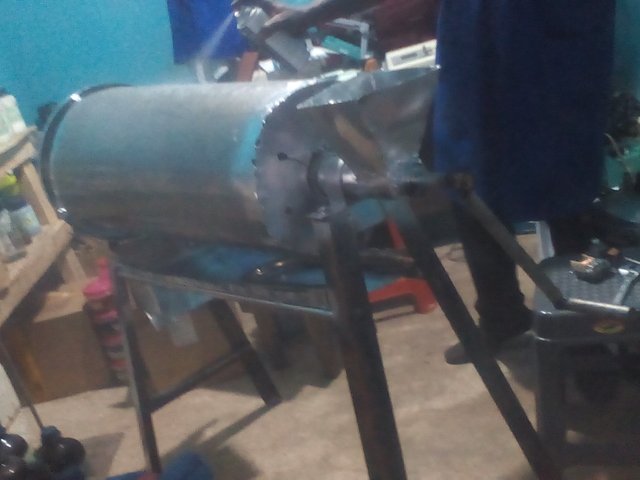
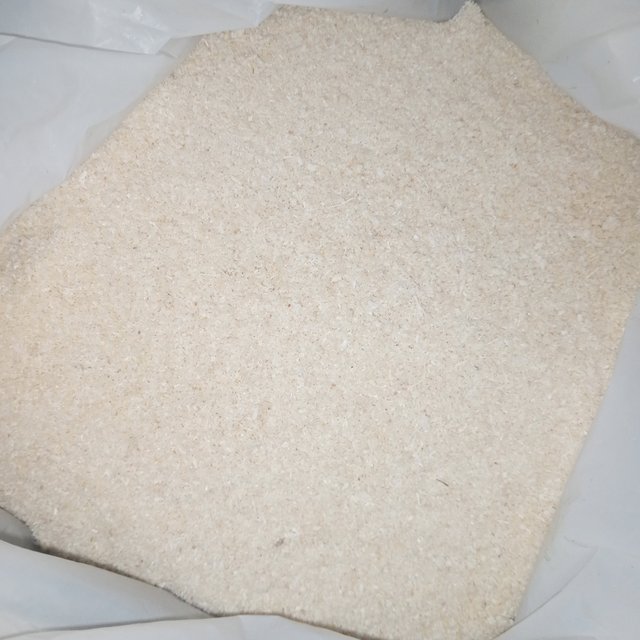
COMPONENTS OF THE EQUIPMENT
Inlet: This is part of the kiln dryer where fermented Cassava tubers are fed to the equipment for drying operation.
Kiln: This is the kiln vessel where the drying operation occurs.
Stand: This is part of the equipment that holds the kiln for rotation.
Outlet: This is part of the equipment where the dried cassava granules are received as the product.
Chimney: This part of the equipment allows a flow of air into the equipment for drying operation to occur
Source of heat This part of the equipment generates heat. I used a burner since natural gas is my fuel for heat generation.
Motor: The motor is the source of force for the rotation of the kiln
Ball Bearings: This part is attached to the kiln to enable rotation and reduce friction.
BRIEF DETAILS ABOUT THE DESIGN(Parameters)
Kiln: I chose 286mm as the diameter of the kiln. Therefore, the radius of the kiln equals the diameter divided by two ( radius =286/2= 143mm).
The circumference of the kiln =2πr = 2×3.14×143= 898.04cm.
The width of the kiln is 29 inches by 27 inches.
Stand: I chose 4 feet as the height of the stand
Burner: I chose a 10,000 BTU/CF burner to heat the kiln
Motor: I chose a 6.0 horsepower motor for the rotation of the kiln.
PHOTOGRAPH SESSION OF THE EQUIPMENT
| Kiln | Stand/base |
|---|
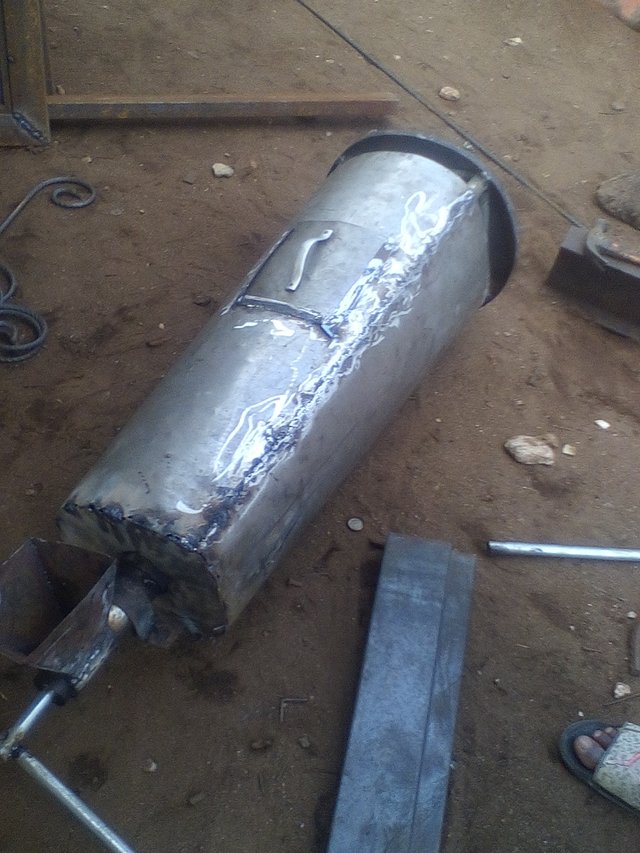
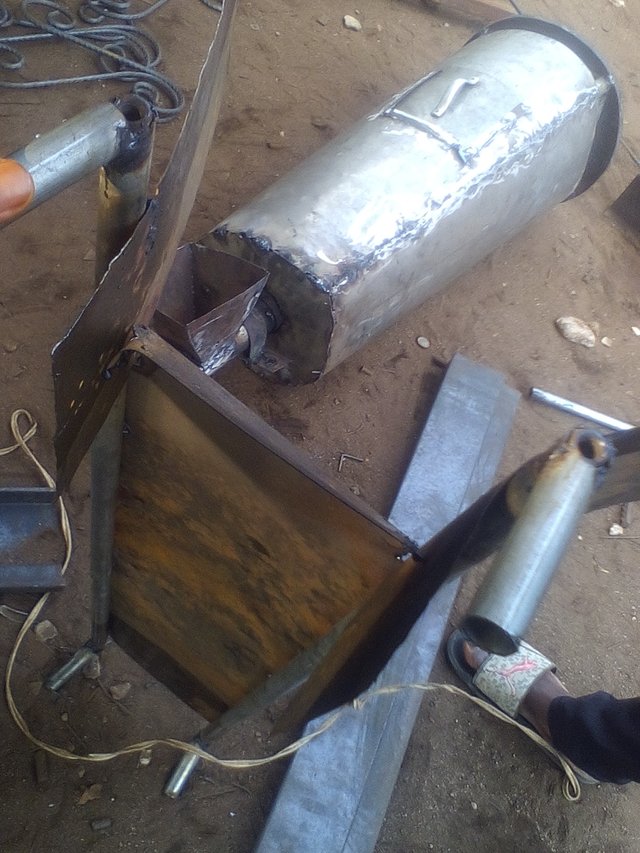
| View 1 | view 2 |
|---|
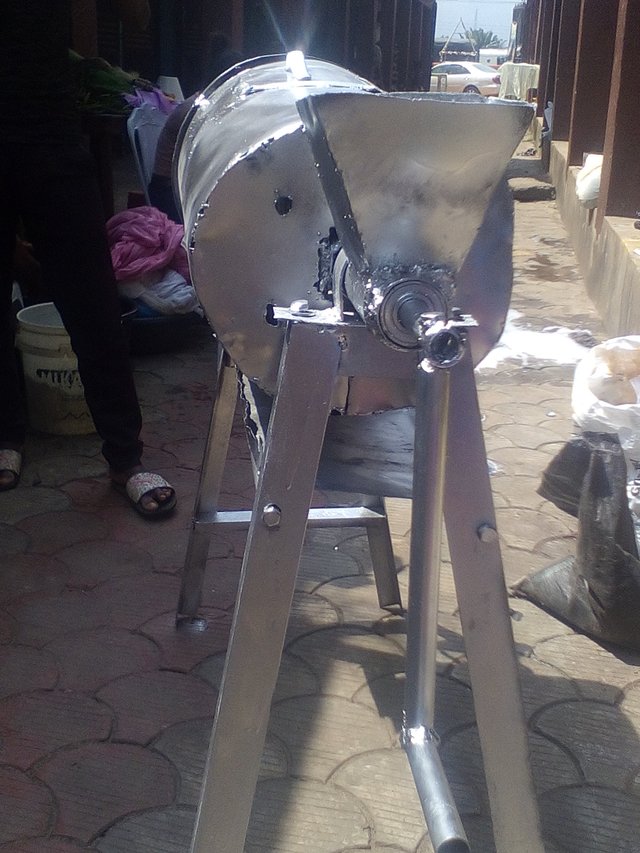

DISCRIPTION AND MECHANISM OF THE EQUIPMENT
DESCRIPTION: The equipment is to be rotating while the drying of cassava granules is ongoing. Therefore, there is a propeller with ball bearings attached to both ends of the kiln, and these propeller and bearings connect the stands, and the function of the bearings is to enable the rotation of the kiln and reduce friction during rotation. Under the kiln, there's a base formed with a pan, about 5 inches from the kiln, and on this base, a burner, which is connected to a gas cylinder, is placed. The propeller that connects both the kiln and stands has a pulley at one end, and a rotary belt will connect the electric motor and the pulley to enable rotation. There is an opening that leads to the kiln where fermented cassava tubers can be fed into the kiln, and an opening at the end of the kiln that has a cover where the dried cassava granules can be received as a product. The inlet also serves as a chimney or air passage for proper drying.
The Mechanism Of The Rotary Kiln Dryer For Processing Cassava Granules:
The motor sends a force to the rotary belt, which would, in turn, send a force to the pulley on the propeller of the kiln, and then the kiln would start rotating proportionally to the force applied by the motor.
As the kiln is rotating, the granules in the Kiln are rotating. And then the burner under the kiln is heating it
As the burner is heating the kiln, the cassava granules in it are also heated up, and as air enters the kiln through the chimney, drying takes place. The combination of air and heat makes drying operation possible. Vapor also goes out through the chimney.
During the test run of the equipment, 50 kilograms of cassava granules dried within 15 to 17 minutes, and with this one can produce many, many kilograms of cassava granules in a day. Very effective!
MODIFICATION OF THE EQUIPMENT
The only area that comes to my mind when it comes to the modification of the equipment is using an electric source of heat and turning the equipment into an automated one.
Have you thought of any way the equipment can be modified? Please I welcome your contribution in the comment section.
CONCLUSION
Rotary kiln dryers have bridged a gap in cassava granules processing as processors can produce commercial quantities of cassava granules in a day with ease. The equipment is open for modification by the designer, and I welcome contributions. The equipment, when tested, dried 50 kilograms of cassava granules in 15 to 17 minutes, which is very effective for commercial purposes.
Thank you!
Best regards
@iddy
Upvoted! Thank you for supporting witness @jswit.
X-shared;
https://x.com/iddy_e_okon/status/1857532553646747723